Verbena hastata
A wetland inhabitant flowering in late summer
Verbena hastata blue vervain
This native perennial wildflower, when in bloom looks a bit like a candelabrum. It forms stiff, vertical, branching pencil-like spikes of small 5-petal purple-blue flowers that bloom a few at a time, advancing towards the pointed tip of the stalk. Individual flowers are 1/8 inch wide and have no scent. Rather than blue, the flowers are usually more violet or deep lavender. The petals fuse to form a flower tube. Bumblebees are among the important pollinators of this species, but a variety of other bees, wasps, butterflies, beetles and flies will visit this plant for nectar or pollen.
The red or green stem has grooves and is 4-sided. Upper leaves are 4-6 in. long, opposite, lance-shaped, doubly toothed and with a rough texture. Lower leaves may have lobes. Most herbivores will not eat it because of the bitter taste. The one exception is the cottontail rabbit, which may eat young foliage to some extent. A variety of songbirds will eat the seeds. It is found in thickets, near streams and ponds and along damp roadsides, The plant may grow 2-7 feet tall and blooms from July to September.
This species is one of the showiest of the vervain species in this area. It is also called swamp vervain or simpler’s joy. There are other species of vervain in the United States with variations in leaf shape and flower size and color. In ancient times European species of vervain were used as a medicinal "cure all". The genus name is Latin for "sacred plant". It is still in use as an herbal medication, but scientists warn that its use may interfere with hormonal therapy or blood pressure medication.
Habitat & Range
Wetland margins, meadows, marshes, occasionally roadsides.
Found in all PA counties.
Range: Grows throughout most of the United States and Canada except Alberta and Newfoundland.
| EMP: | FACW |
|---|---|
| NCNE: | FACW |
Phenology
Flowers mid-July through August.
Plant Codes
S-rank: S5 (Secure)
G-rank: G5 (Secure)
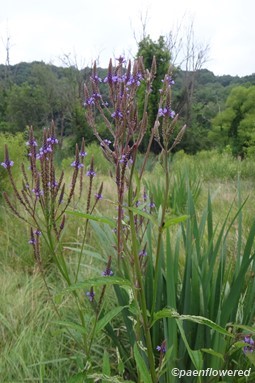
.jpg?v=638487129670000000)
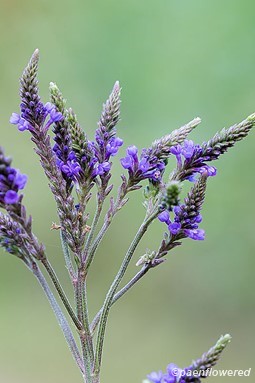
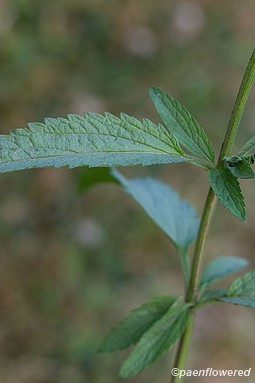

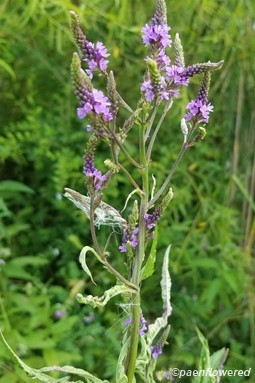

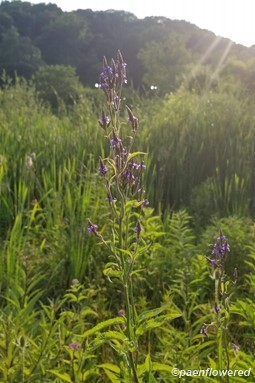
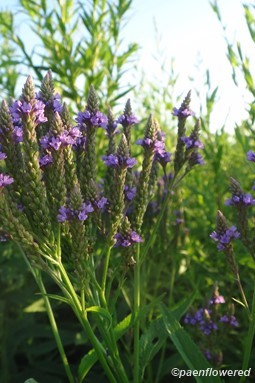
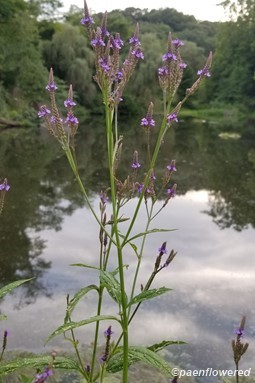
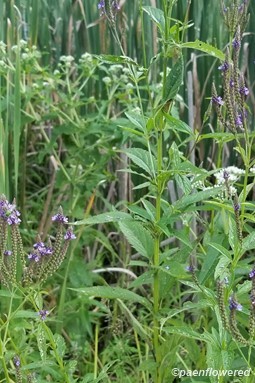



Comments
Have you spotted this plant in your area? We'd love to hear about your experience! Share your comments or questions about the plant below. Comments are moderated before posting.